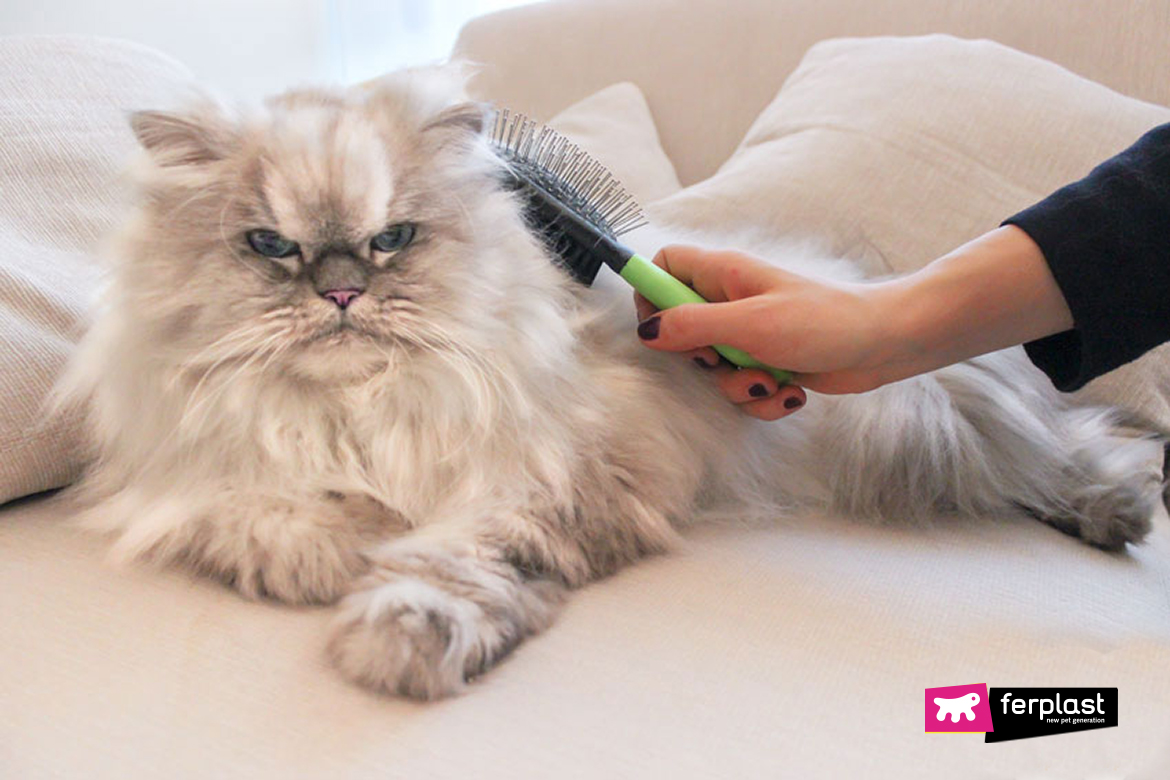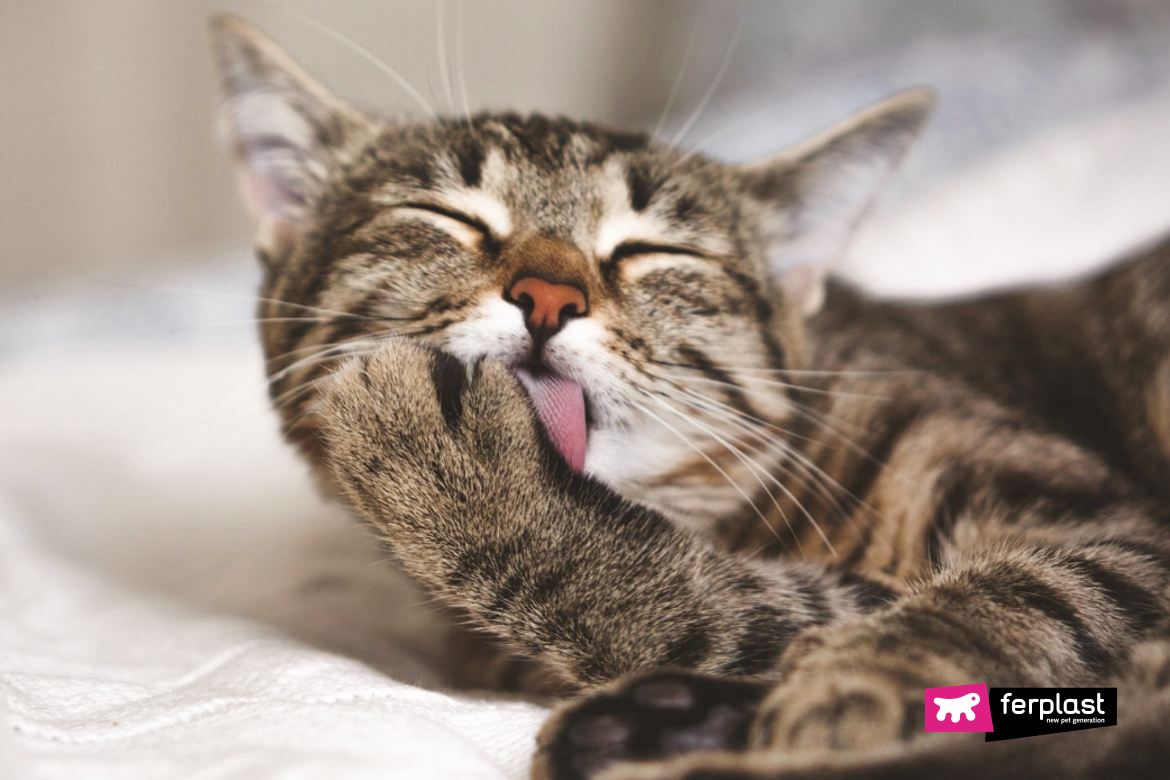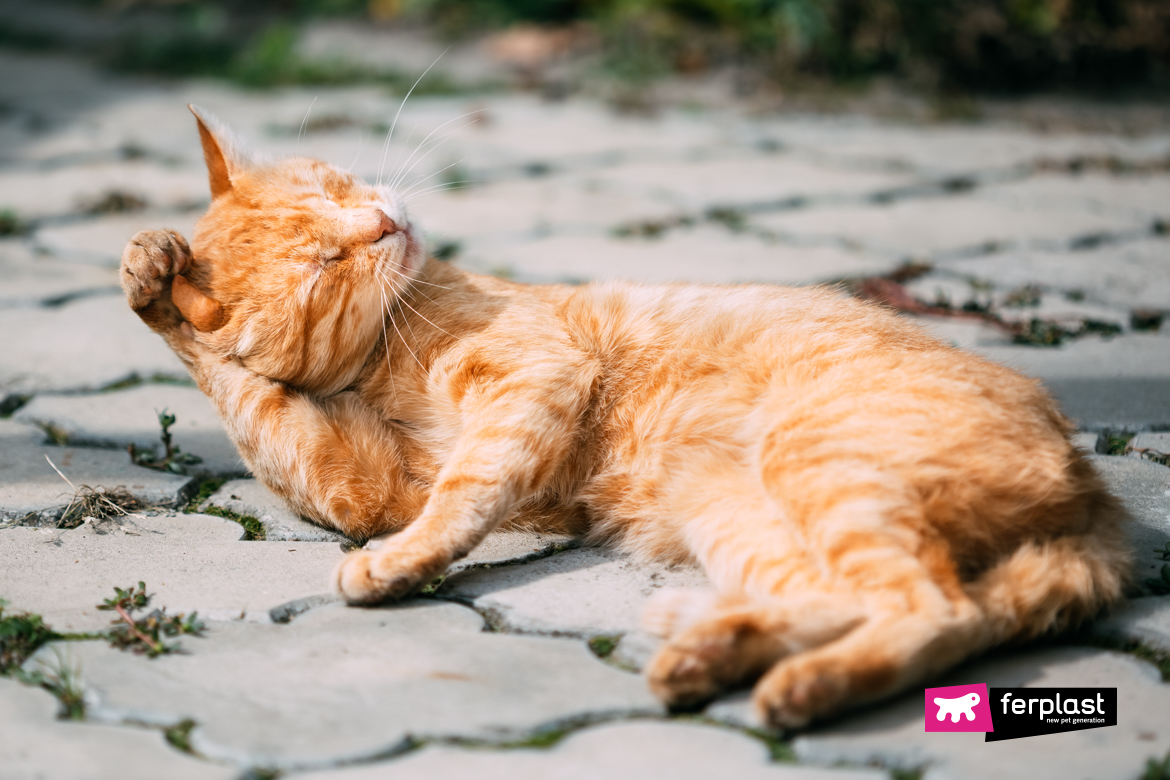Cats can also suffer from dermatitis. House cats are subject to certain skin irritations, just like we are, especially at certain times of the year or when particularly stressed. Today, we will explain how to recognize dermatitis and what the best treatments are!
Types of dermatitis in cats
1. DERMATITIS CAUSED BY PARASITES
The most common form of dermatitis is that caused by parasites, such as ticks and fleas. When these terrible beasts bite your cat, they leave their saliva on the cat’s skin, which causes itching and redness. Cats that live outdoors are affected the most, but felines living indoors cannot be excluded a priori. Pay more attention in the hot months!
2. DERMATITIS FROM A FOOD ALLERGY
If your cat is allergic to several substances and proteins contained in food, she will show her discomfort with an allergic reaction, usually with red spots and excessive tendency to scratch.
3. ATOPIC DERMATITIS
Atopic dermatitis is frequent when the seasons change and it is caused by pollens, grasses and more generally by substances present in the air and by moulds.
4. CAUSED BY STRESS
If your cat has suffered a psychological trauma and is particularly stressed due to a move or the arrival of a new pet at home, she might begin to itch all over, to the point that the scratching causes very deep wounds.
What are the symptoms of dermatitis?
A healthy cat’s skin has no scabs, scales, black or white spots, lumps, bulges or inflamed areas. If you notice your cat scratching vigorously, especially around her neck and head area, or if she is licking compulsively, losing too much fur and even has areas marked with blood, you should be alarmed and check the situation, possibly by contacting the vet. He will immediately recognize the type of dermatitis affecting your feline!
How to treat dermatitis
Depending on the type of dermatitis, there are different treatments, including medical therapy, therapeutic diets and behavioural treatment. This means that once the type of dermatitis has been diagnosed, you can, for example, eliminate certain foods from the diet or use antiparasitic treatments and other drugs, always trying to brush and keep your cat’s hair clean and tidy. A good tool to use during the treatment is a veterinary dog collar, which prevents your cat from biting and scratching herself, allowing the skin to regenerate.






